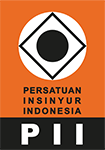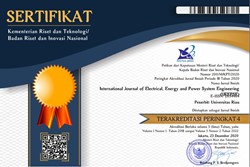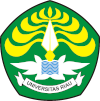Employee Attendance Application Using QR Code Android-Based at Eria Hospital Pekanbaru
Abstract
Eria Hospital has implemented a fingerprint attendance system, but it has some limitations such as difficulty in reading fingerprints, limited access to fingerprint scanner which is only located in one place, and dependence on shared equipment. To overcome these problems, an Android-based attendance application was developed using Waterfall software design. This application uses QR code and GPS to make it easier for employees to record their attendance while in the work area. The quality of this application is based on ISO 25010 quality standards, which include functional testing with all functionalities working well, reliability testing with an A rating, compatibility testing with split-screen feature compatibility, security testing with an A rating, portability testing with results can be install on different devices and Android versions 8.1 to 12, maintainability testing with an A rating, efficiency testing with a startup time of around 1.6 seconds, and user experience testing with attractiveness score of 2.62, perspicuity score of 2.57, efficiency score of 2.62, dependability score of 2.51, stimulation score of 2.62, and novelty score of 2.40. Overall, the implementation of an Android-based attendance application using QR Code has proved to be a viable solution to the challenges faced by the fingerprint attendance system, and has contributed to the optimization of attendance data collection and processing in Eria Hospital.
References
S. A. Alsaqri, A. A. Al-Khashman, A. Al-Hinai, and M. Al-Hinai, “Design and Implementation of a QR Code and GPS-Based Attendance System for Hospitals,” IEEE Access, vol. 7, pp. 136981–136988, 2019.
S. B. Pressman, "Software Engineering: A Practitioner's Approach," 7th ed. McGraw-Hill, 2010.
W. Royce, "Managing the development of large software systems," Proceedings of the IEEE WESCON, pp. 1-9, 1970.
A. Khan and A. Ali, "An Empirical Study of ISO 25010 Quality Standards for Software Product Evaluation," Journal of Software Engineering and Applications, vol. 9, no. 2, pp. 44-54, 2016.
ISO/IEC 25010:2011. "Systems and software engineering - Systems and software Quality Requirements and Evaluation (SQuaRE) - System and software quality models." International Organization for Standardization, Geneva, Switzerland, 2011.
Lee and B. N. Clark, "Black Box Testing: Techniques for Functional Testing of Software and Systems," IEEE Software, vol. 18, no. 6, pp. 70-77, 2001.
S. Nasution and Syachrodi, “PINDIT: an Online Digital Signage at Department of Electrical Engineering, University of Riau”, IJEEPSE, vol. 4, no. 1, pp. 113-120, Feb. 2021.
T. Hassenzahl, M. Burmester, and Y. Kock, “User experience - a research agenda,” Interacting with Computers, vol. 18, no. 2, pp. 127-140, 2006.
Santoso, HB, Schrepp, M, Isal, RYK, Utomo, AY & Priyogi, B 2016, “Measuring user experience of the student-centered E-learning environment,” Journal of Educators Online, vol. 13, no. 1, pp. 1-79.
Y. Zhang and X. Fan, “A Study on Requirements Engineering for Embedded Systems,” in Proceedings of the 7th IEEE International Conference on Embedded Software and Systems (ICESS), 2008, pp. 453-460.
Babar, M. A., and Su, J. "Non-Functional Requirements Engineering: A Roadmap." Software, IEEE, vol. 27, no. 2, pp. 86-93, 2010.
K. Knight, “The design process: wireframes,” UX Design, vol. 2, no. 3, pp. 25-29, Apr. 2010.
P. Chen, "The entity-relationship model-toward a unified view of data," ACM Transactions on Database Systems (TODS), vol. 1, no. 1, pp. 9-36, 1976.
Copyright (c) 2023 Muhammad Iqbal Fachry Krisbudiana, Edi Susilo

This work is licensed under a Creative Commons Attribution-NonCommercial 4.0 International License.


















